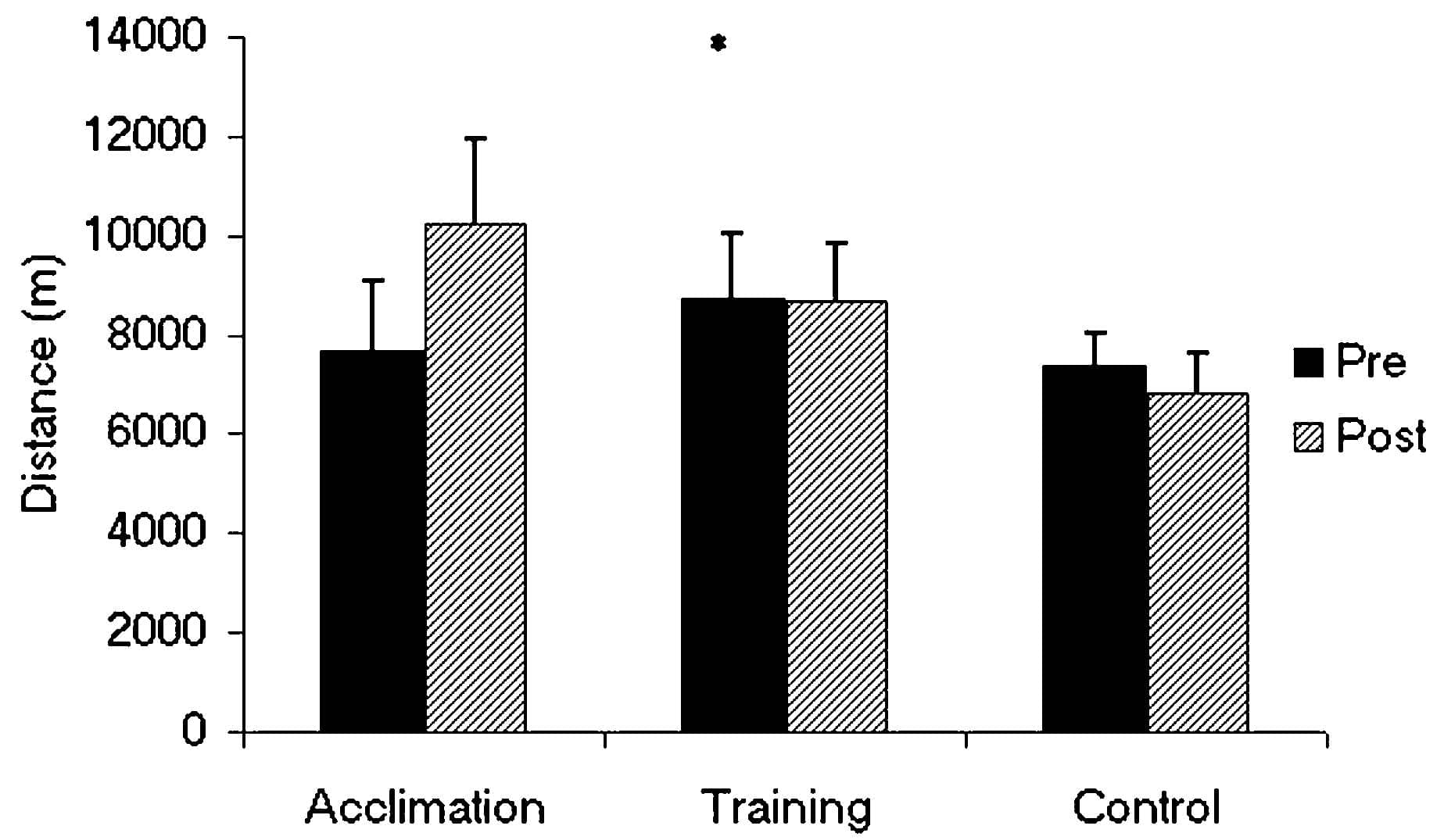It is well documented that heat acclimation of 6 or more sessions of at least 60 min duration prolongs the time to exhaustion during endurance walking, cycling and running in the heat. However, the effect of acclimation on prolonged high intensity intermittent running has not yet been investigated. High intensity intermittent exercise in the heat (35°C) has previously been demonstrated to provide a greater thermal strain than continuous exercise and may therefore be a more powerful stimulus for acclimation (Nevill et al. 1995). Furthermore, many acclimation studies have not included an equivalent training group in moderate conditions and/or a control group, which makes it difficult to determine the extent of the acclimation adaptations, compared with the training adaptations per se. The aim of the present study was to test the hypothesis that 4 high intensity intermittent running acclimation sessions will improve the performance of well-trained female games players during intermittent, high intensity shuttle running in a hot environment (30°C, 27% RH).
After Loughborough University ethical approval was obtained, seventeen well-trained female games players volunteered for the study. The impact of 4 short heat acclimation sessions (30-45 min of the Loughborough Intermittent Shuttle Test [LIST]; Nicholas et al. 2000) on high intensity intermittent running performance (LIST), in terms of distance run, was examined. Three groups were used, an acclimation group (30°C; n = 6), a moderate training group (18°C; n = 6) and a control group (n = 5) who did not complete any training between the main trials. The 4 acclimation or moderate training sessions were completed in a 10 day period prior to the post-acclimation trial. The acclimation and training sessions were interspersed with one or two rest days between each session within the 10 days. Data were analysed using a two-or three-way ANOVA with repeated measures over trial or trial and time. Data are presented as mean ± S.E.M.
Exercise capacity was increased by 33 % in the acclimation group (interaction group X trial P < 0.05), but was unchanged in the moderate and control groups (Fig. 1). The acclimation group had a lower rectal temperature (interaction group X trial X time P < 0.01) and an increase in thermal comfort after acclimation (interaction group X trial P < 0.01). There was no difference in serum progesterone, aldosterone or cortisol concentrations following acclimation or between groups. There were no changes in estimated resting plasma volume or estimated sweat rate following acclimation. Therefore a lowering of deep body temperature and concomitant rise in thermal comfort may be responsible for the performance improvement.

